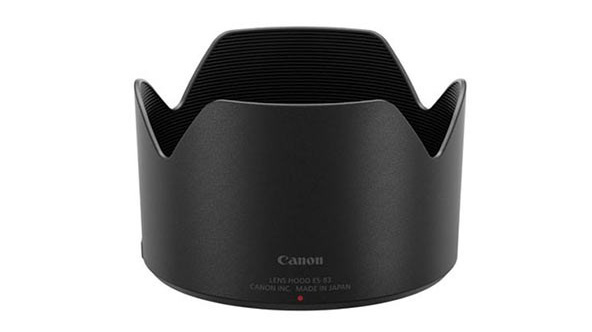It’s easy to have mixed emotions as a Canon photographer. The Japanese photographic company, formed in 1937, did up until recently hold the top spot as the photographic market leader worldwide.
As with many big companies, there are ever-bigger decisions to be made, profits to be had and shareholders to keep happy. But has Canon been putting profits before the people lately? Well, in recent years, I’ve at times found it hard to stick loyal to the Canon brand, as it has made some significant anti-consumer moves that have left a rather sour taste in my mouth.
It’s not all bad, though. In fact, to provide balance, I think it’s important to show both sides of the coin. So I’ve put together my top five pro- and anti-consumer moves from Canon in recent memory, and I really do hope the company takes note of this article – and not only changes a few of its bad behaviors but also keeps doing the things that its customers love.
Get involved and let me know if you agree, disagree or if I’ve missed anything.
The positives…
1) Firmware updates
Before we get into the negatives, one of the things I love about being a Canon shooter in the modern age is the regular firmware updates. Canon regularly pushes out new updates that are easy to install and can give your cameras new features and extend their lifespan.
I remember back in the days of the Canon EOS 5D Mark III, where you’d have to risk bricking your camera by installing third-party software like Magic Lantern to get some of the features you wanted. The cameras were capable of features such as RAW video and zebra peaking, but Canon wasn’t including them in any official way – so users had to take risks through unofficial channels.
Now, thanks to regular updates, Canon’s new cameras can all stay up to date, get the latest features and help users squeeze the most out of their current kit, helping them stave off upgrading to a new camera for a while.
The best camera deals, reviews, product advice, and unmissable photography news, direct to your inbox!
2) Revolutionizing the RF mount

Canon admittedly took a hot minute before following Sony‘s lead into the world of full-frame mirrorless cameras – though one could argue that it took its time to ensure that it got such a big move absolutely spot-on.
I’d argue that Canon nailed it, as the RF mount has gone on to revolutionize photography. Its larger-diameter mount has made it possible to achieve incredible optics such as the Canon RF 10-20mm f/4L IS STM and Canon RF 24-105mm f/2.8L IS USM Z – lenses that many would have thought impossible if you asked them even a few years ago.
3) Aftercare, warranty, support and Canon Club

Another positive is the aftercare, support and reliable warranty you get with Canon products. Customers also have access to the Canon Club, if you’ve bought a product in the last 12 months, for benefits including tutorials, workshops with brand ambassadors and VIP discounts.
You also have the more advanced Canon Professional Services, aka CPS, that helps working professionals stay on top of maintenance and servicing. It’s highly rated by many of the pros I’ve asked – and is reasonably priced, too.
4) Still invested in DSLRs

I’m glad that Canon is still supporting and selling some of its DSLR cameras, though I’m not 100% sure how much longer this continue. That said, many of Canon’s competitors have now discontinued their lines of DSLRs and solely switched to mirrorless.
Canon’s most affordable DSLR (the Rebel T7 / EOS 2000D) is still considerably less than its cheapest mirrorless offering (the EOS R100), so it’s great to still give those customers on strict budget an extra option.
5) Canon EF-EOS R mount adapters

Lastly for the positives, I’d like to take a moment to talk about Canon’s EF-EOS R mount adapters. Notice how I said ‘adapters’ plural. It would have been easy for Canon to just bring out a bog-standard adapter to make EF-mount lenses for DSLRs compatible with its new mirrorless RF mount.
Canon went the extra mile, though, and brought out more mount adapters with additional features such as a Control Ring or drop-in filter, so DSLR users didn’t feel the need to instantly cash in their old lenses. I’ve personally loved using these different adapters with my old EF lenses, as I’m still finding it too costly to upgrade to RF glass.
The negatives
1) Lens hoods!

Okay, let’s start with a big one that’s bugged me for years: Canon is one of the only manufacturers to charge extra for its lens hoods. Its premium, top-quality L-series optics come with a hood included, but if you buy any non-L-series lens then be prepared to fork out – or suffer without one.
You might be shocked even further when you see the prices of some of these hoods, too! If you’re lucky it might only cost you $20, like the ES-68 hood for the Canon EF 50mm f/1.8 STM, but it could cost you over $70 if you need the ET-74B hood for the Canon EF 70-300mm f/4-5.6 IS II USM.
With prices for a bit of plastic so steep, it’s really no surprise that many Canon photographers have turned to 3D-printed options – either printing their own or buying them cheap online. Sort it out, Canon!
2) A distinct lack of third-party RF autofocus lenses

One of the biggest benefits to owning an interchangeable lens system is the ability to swap lenses to suit your specific needs – whether that’s because you need a wide-angle lens for vast landscapes, or a telephoto lens for zooming in on distant wildlife. Each camera brand should have a wide variety of optics to suit your needs for the task at hand.
While Canon launched its revolutionary full-frame RF mount back in October 2018, it’s taken until this year for the company to fully open up its mount to third-party manufacturers – and even now it still appears limited to a handful of APS-C lenses from Sigma and Tamron.
It’s true that Canon has done a good job of building up its RF and RF-S lens ranges over the years to cover popular focal lengths, but only offering in-house options has undoubtedly hampered competition. Many of Canon’s L-series lenses cost several thousands of dollars and, without any third-party competition, it can essentially charge what it likes, as consumers have no third-party alternatives to keep the prices in check.
This sits in stark contrast with the likes of Sony and Nikon, which opened their full-frame mirrorless mounts to third parties (with autofocus) very quickly (though Nikon did drag its heels a bit).
With Canon hoarding all the lens sales to itself, is it any surprise that many Canon users have switched to another system? In recent years we’ve seen Canon fall from its number one spot as the market leader and Sony reach the top – could the two be correlated?
3) Changing the body and lens cap design

I switched over from Nikon to Canon in 2019, and one of the small but noticeable positive changes was that on Canon’s DSLRs you could attach the body and rear lens caps in any of three ways. This may seem trivial, but anyone who has upgraded from a Canon DSLR to Canon mirrorless model will no doubt understand my frustration with the newly designed caps!
Under the old system it was practically impossible to mess up attaching the body and lens caps, but now they only fit in one specific orientation rather than the original three. Again this might seem like a small thing, but the extra time needed to carefully line them up when switching lenses has cost me “the shot” on more than one occasion. If it’s not broke, don’t fix it Canon!
4) Shutter count information

It’s handy to know the shutter count of your camera for a number of reasons. Perhaps you want to know how much life your shutter unit has left, or you’re looking to sell your camera and want to give the buyer as much information as possible. After all, you can charge more for a camera with a lower shutter count.
Many camera manufacturers embed this information in the metadata of JPEG and RAW images. While I wish it was as easy as going into a camera menu to find this information, it’s not too difficult to upload one of your images to a website like Camera Shutter Count to find it out.
It used to be possible to use this method with EOS cameras, but at some point something changed. You even used to be able to plug your Canon into your computer and use the Canon EOS Utility app to do this. But now you either need to send your camera to Canon for servicing or, more likely, download a third-party app such as ShutterCount to get this vital info.
Most people will no doubt buy an app like ShutterCount, as it doesn’t break the bank, though I’m not sure how gatekeeping this information benefits Canon, as it’s not seeing any of the money from its customers buying a third-party app. It just seems very anti-consumer, and this information should be readily available.
5) Ink Cartridges

Canon follows the frustrating (yet fairly standard) practice of putting computer chips and DRM (Digital Rights Management) into its ink cartridges, placing an obstacle in the way of users who would like to use cheaper third-party cartridges or top up their inks themselves from larger more cost-effective ink bottles.
While Canon would no doubt argue that this ensures the printer is working in the optimum conditions with the correct ink, ultimately I believe it should be up to the customer to do what the hell they like with it. If they’d rather use lower-quality ink, then they should have the right to make that decision. It’s more than likely that Canon doesn’t make much money, if any, on the printers, so it expects to make a profit on repeated Canon ink sales with a fat markup.
Having a chip inside the ink cartridge can also cause the printer to think there’s no ink left inside it, even if there is. This is particularly infuriating considering that first-party printer ink is often more expensive than gold (pound-for-pound)!
In an ironic turn of events in the 2022 global chip and semicondunctor shortage, multiple news outlets reported that Canon didn’t have enough chips for its printer cartridges and was shipping them without them and telling its customers how to get around the DRM – you couldn’t make it up!
Take a look at the best Canon cameras in the R system right now, along with the best Canon RF lenses to pair with them.

